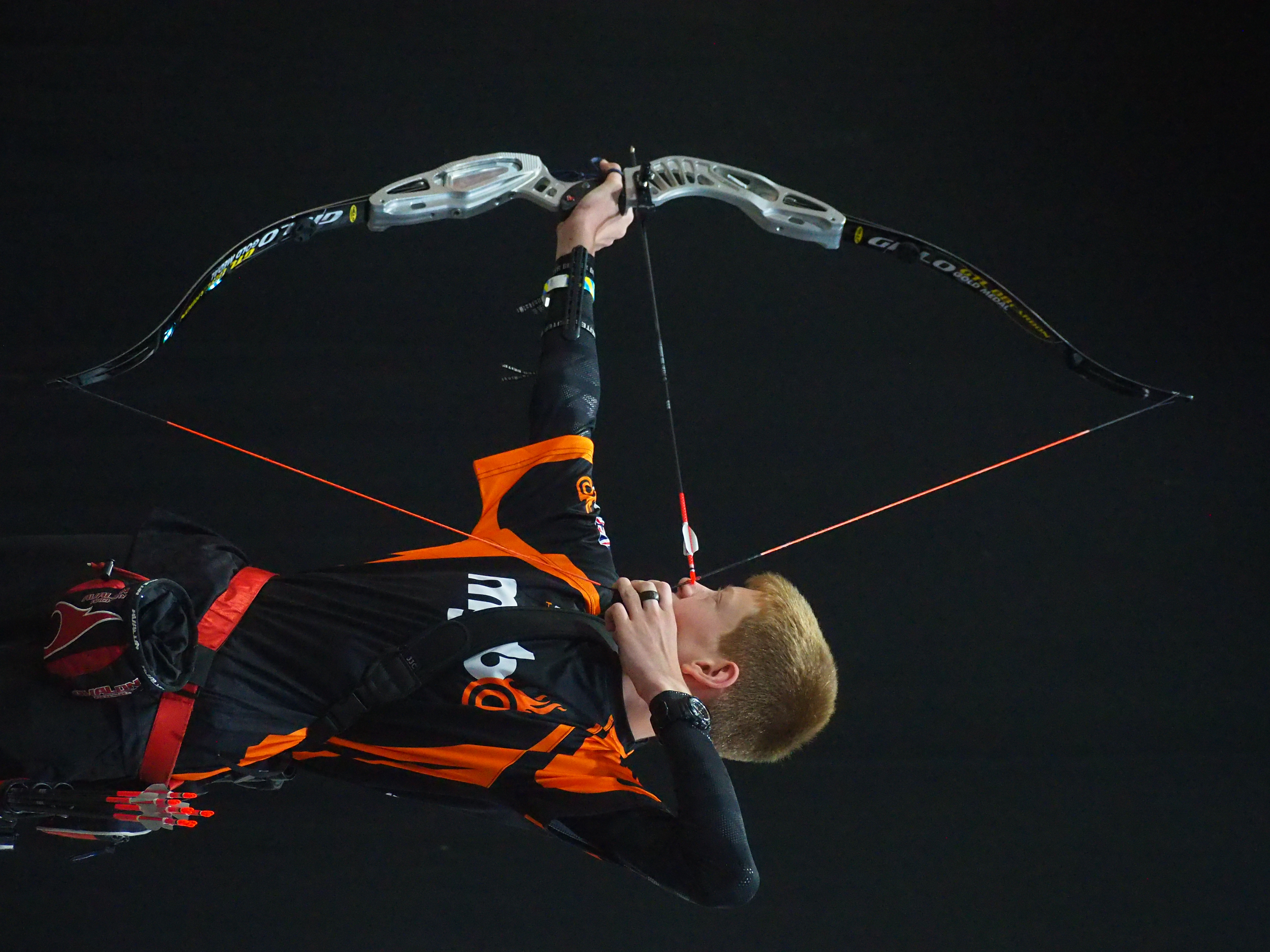The term "barebow" emphasises the minimalistic approach to equipment, focusing on the fundamental elements of archery skill.

Barebow archery is a style of archery that involves shooting a bow without the use of accessories such as sights, stabilisers, or mechanical release aids. The key kit differences are:
There are a few different techniques that barebow shooters use, too:
Barebow archery places a strong emphasis on the archer's skill, mental focus, and consistency. It provides a unique and challenging experience that attracts archers looking to connect with the roots of the sport and hone their shooting abilities without relying on advanced equipment.
When purchasing your first barebow it’s recommended that you spend most of your budget on the riser (the part that you hold) and less so on the limbs. The reason for this is as you get stronger and better, you’ll want to increase your limb poundage, so you might be buying a new set of limbs again within your first year.
There are barebow-specific risers which have certain shooting advantages. The first is that the riser has been designed to shoot without stabilisers.
The second is that nearly all barebow risers have some kind of weight system built into them. Recurve shooters use rods and stabilisers to keep their bow steady in their hand when shooting, but barebow shooters use weights to achieve this. Having a weight system on your riser allows you to customise the overall weight and feel of the riser.
It is always worth trying out different risers in the hand as each riser has a different grip and all of our hands are different shapes and sizes..jpg)
We recommend spending no more than around £100 on your first set of limbs. Limbs are made in many different materials: carbon, graphene, foam, bamboo, fibreglass, wood... The list goes on! Beginner limbs are usually made from wood, foam and fibreglass and more advanced limbs use wood, bamboo, foam and carbon.
It is really important to pay attention to the limb fittings, which is how you connect your limbs to your riser. The limb fittings on your riser must match with your limbs, otherwise you won’ be able to attach your limbs. For this reason, the International Limb Fit System (ILF) is the most common type of limb, and means you’re not limited by brand.
Limbs come in different lengths: short, medium, long. What you need should be determined by your height and draw length. This might have been measured during your beginner’s course, but it’s worth getting it done again at an archery shop because buying limbs that are too short can damage the bow, whereas buying limbs that are too long makes the bow unwieldy and the shot slow.
Finger sling (Optional)
Even though the bit in the middle of your riser that you hold is called a grip, you’re not actually supposed to grip it. This is where a finger or wrist sling comes in. Slings catch the bow when it leaps forward after the shot and stops it from falling on the ground. This means you can relax your bow hand and reduce the inconsistencies in your shooting.
Here's a video showing you how to make a finger sling from a shoelace.
Pressure Button (Optional)
Also known as a plunger, the pressure button centres the arrow and stabilises the arrow's flight as it leaves the bow. You can also adjust the tension on the button allowing for more tune ability in your arrows resulting in a more forgiving shot.
Weights (Optional)
As we mentioned, when shooting barebow you’ll need some weight to help stabilise the bow. It might be that your riser is quite heavy, and you don’t actually need any additional weight, which is great.
But, if you so, start light. They’re usually measured in grams and start from around 150g, which is plenty. You’ll need to experiment with where best to put the weight on your riser before you go heavier.
Click on the links below to find out more about the other bowstyles:
Link to longbow
Link to compound